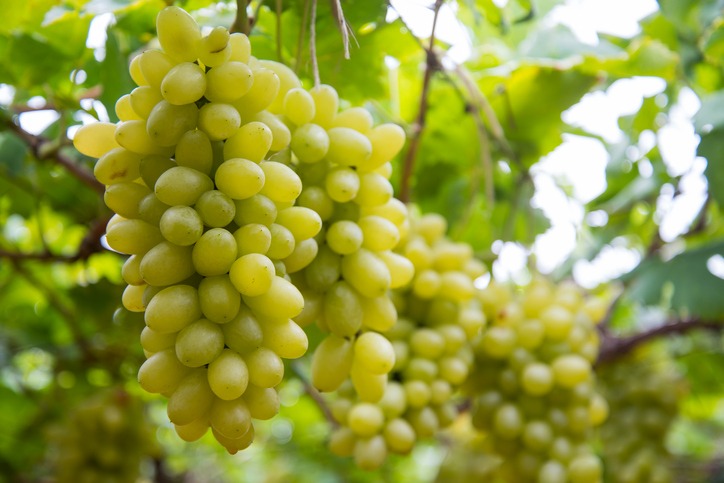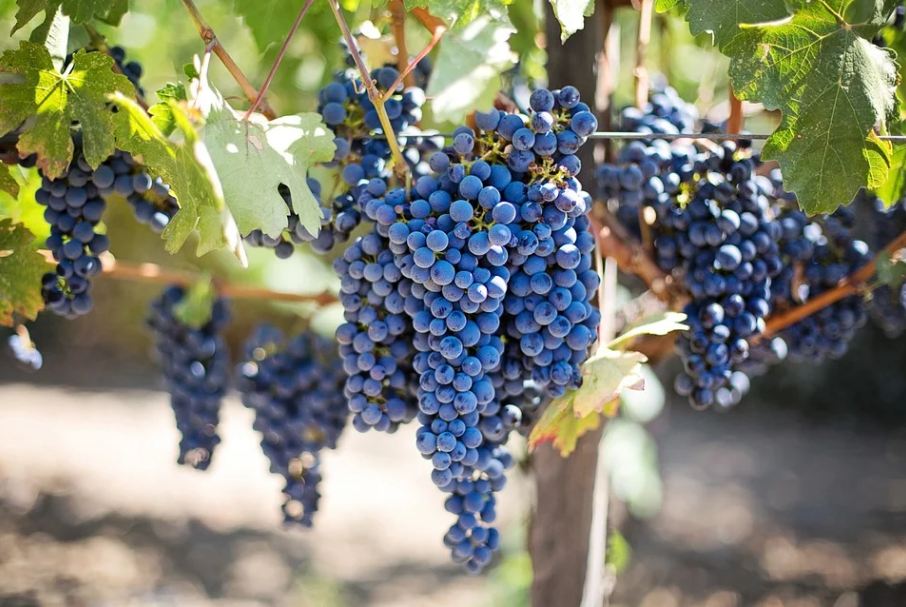We were already familiar with how grapefruits look like, their colors, and perhaps even before we tasted it, and we knew it because it is usually included in the alphabet songs that usually will introduce grape for the letter G.
Grapes have been a significant part of the human culture, cuisine, and food consumption since Biblical times. The grapes mostly appear in massive clusters as it is a non-climacteric type of fruit. The reason archaeologists have tipped the use of grapes for around 8,000 years is that the earliest evidence of winemaking was also about 8,000 years.
Uses and Health Benefits of Grapes
Grapes are commonly used in wines, jams, jellies, and juices. But more than those common beverages and recipes that we know, these dazzling red and green jewels can be the centerpiece of any meal. From our sweet desserts to savory suppers, grapes have become a star fruit in more and more kitchens around the globe.
China, the US, Italy, and Spain are the top major producers of grapes globally. In the US, California is the main producer of table grapes. You can guarantee that these robust vines are abundant in supermarkets and farmer’s markets throughout the state.
Grapes are very rich in antioxidants, which help in many processes and efficient functions of our body, such as cell repair and strengthening the immune system.
Grapes offer vitamin C, beta-carotene, quercetin, lutein, lycopene, and ellagic acid, which are also powerful antioxidants. Other compounds that it contains have been found to help prevent cancer, lower blood cholesterol, and decrease blood sugar levels.
Unconventional Grape Recipes
You can check on some of these unique recipes that use grapes as the main ingredient. A Sweet Grape Salad is favored for breakfast with hearty ingredients to boost your energy for the day. You can add pecans and brown sugar to enhance the sweetness of the grapes! Another recipe you can try is Fresh Grape Tar. This tart looks and tastes so creamy, and the sweetness from the grapes is just a perfect complement. Or try out a new flavor to your chicken as you roast it with grapes and Mary.
If you plan to have your winemaking business from your own grapes or just loved the idea and the benefit that growing grapes can offer, you don’t need to live on a vineyard in California just to make it happen. Because right in your backyard, you can explore and grow them and eventually enjoy picking and munching them fresh.
The first thing to do is to know where you are located. Of course, you surely know your address and what part of the globe you are situated, but knowing your location means you need to determine what climate and weather you typically have. From this point, you will know what variety of grapes can be best grown.
In any part of the country (Zones 5-9), grapes can, but you need to choose one that suits your local summer heat and cold winter conditions. You can ask your local extension office if what specific variety is suited for your area.
Planting Grapes
Regardless of which region you grow your grapes, all they wanted is full sun all day and well-drained soil free of weeds and grass. Of course, it’s a necessary thing that you don’t want any competition for water and nutrients. Imagine those Italian hillside vineyards – aim for at least reaching ¾ of that.
Early spring is the best time to plant grapes when you’ll find bare-root varieties available. As you plant, trim the existing root back to 6 inches to boost feeder roots to grow near the trunk. The grapevine’s root system can grow deep, so well-cultivated soil is excellent. Sometimes, you also need to do pruning at planting time.
Prune off all but leave one stem, and then look for the buds on the stem. Cut the stem back to only two buds, and you’re all the way there.
Feeding Grapes
Apply a nitrogen fertilizer on your grape plants during the first two or three years, each early spring. During the spring, grapevines require nitrogen when they proliferate. If you prefer organic fertilizer, such as using manure, the University of California recommends applying it in January or February. Poultry or rabbit manure is applied 5 to 10 pounds or 5 to 20 pounds of a steer or cow manure per vine.
Apply commercial fertilizers such as urea, ammonium nitrate, and ammonium sulfate after bloom or as the grapes reach 1/4-inch in diameter.



